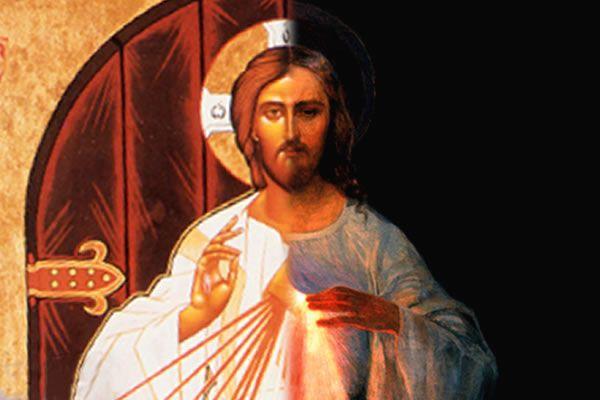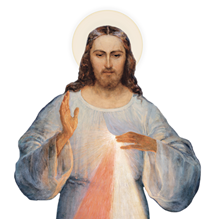
"Promoting the restoration of unity among all Christians is one of the chief concerns of the Second Sacred Ecumenical Council of the Vatican."
This opening statement of the Second Vatican Council's Decree on Ecumenism established the commitment of the Church to Christian unity, which Pope John Paul II carried out as a major thrust of his pontificate. He elaborated on this theme in his encyclical That They May Be One (Ut Unum Sint). His apostolic letter The Eastern Light (Orientale Lumen) is an appeal to the Christians of East and West to restore unity.
Saint Faustina fulfills the very core of this call to unity. Her life, mission, and spirituality blend elements of both Eastern and Western Church traditions. Her desire for holiness extended to Church unity, especially through her prayers and sacrifices.
'The Spark' from Poland: Where East and West Meet
Saint Faustina Kowalska writes in her Diary:
As I was praying for Poland, I heard the words: I bear a special love for Poland, and if she will be obedient to My will, I will exalt her in might and holiness. From her will come forth the spark that will prepare the world for My final coming (Diary, 1732).
This mysterious spark from Poland can be seen as a combination of several people and events: St. Faustina and the message of Divine Mercy, St. Maximilian Kolbe and the role of Mary and the Holy Spirit, Pope John Paul II's consecrating all to Mary and consecrating the world to Divine Mercy, and Lech Walesa and the Solidarity movement, which helped topple Soviet communism. These people and their works, individually and together, are sparks that continue to ignite both the East and the West.
The Polish Church is a fascinating combination of Eastern and Western spirituality, with Poland in central Europe serving as a crossroads between the East and West. Before Poland's official date of conversion in A.D. 966, the missionary apostle St. Cyril and his brother, St. Methodius, brought the Christian faith from Constantinople to Moravia, and southeastern Poland.
In Orientale Lumen, Pope John Paul II elaborates on the rich treasures that are integral to the Church of the East. Many of them are evident not only in Polish Catholic spirituality but also in the spirituality of The Divine Mercy as revealed to and lived out by St. Faustina. In Orientale Lumen, Pope John Paul II exhorts us to implore The Divine Mercy for unity of the Churches of the East and West.
As John Paul II put it on Divine Mercy Sunday in 1994, St. Faustina Kowalska is "the great apostle of Divine Mercy in our time." Her message, exemplified by her life, is the spark that will enkindle the unity of the Churches of the East and West that is to prepare for the final coming of the Lord. She lived an amazing blend of Eastern and Western spirituality. Her life helps unlock the mysteries of both.
Icons and Other Devotions
A variety of Eastern elements have become part of Polish Catholic devotional life over the centuries and were woven into the life of St. Faustina. The Eastern tradition of icons is one example. In his book Behold the Beauty of the Lord: Praying with Icons, Henri Nouwen says that the "Byzantine fathers focus on gazing." Icons are painted for the purpose of helping the one who gazes at them to enter into an experience of prayer.
Icons may appear flat and stylized to one more accustomed to Western religious art. However, as Nouwen explains in his book, "They do not reveal themselves to us at first sight. It is only gradually, after a patient, prayerful presence that they start speaking to us. And as they speak, they speak more to our inner than to our outer senses. They speak to the heart that searches for God" (Nouwen, Behold the Beauty of the Lord. Notre Dame, Ind.: Ave Maria Press, 1987, p. 13).
In Poland, the appreciation of icons is seen in the veneration of the icon of Our Lady of Czestochowa and many others in parish churches and shrines throughout the country. Most homes have a prayer corner honoring the household icon. Faustina herself obtained permission to visit the icon of Our Lady of Czestochowa, where she spent hours in prayer before the image.
The blessing of food baskets at Easter and the sharing of the bread wafer (oplatek) at the Vigil of Christmas are other Polish customs. Sharing the wafer was a significant moment in the spiritual life of St. Faustina on Christmas Eve (see Diary, 435, 524, 845, 1438).
Common hymns such as the Thrice-Holy Hymn and those of St. Ephraim, the Good Friday Lamentations, the burial service of Our Lord, and the Easter Sunday Mass at dawn are other traditional practices of Polish Catholics.
The Western Style Icon of Jesus, The Divine Mercy
The image of Jesus, the Divine Mercy, as painted by Eugene Kazimirowski under the direction of St. Faustina is what I call a "Western Icon." Granted, that it is not "written" or painted as Eastern icons are, with inverse perspective so that the figure of Jesus draws you inward. Rather, in positive perspective, Jesus comes outward to the viewer. The image of The Divine Mercy does portray the essence of icons, namely, that of light coming out of darkness and a portrayal of the Passion, death, and Resurrection of Jesus.
The image of The Divine Mercy, I love to paint or "write," is like a "multi-exposure photo" of Holy Thursday, Good Friday, Easter Sunday, Mercy Sunday, and Pentecost - alluding to all these events of the paschal mystery in one image of the crucified and risen Christ.
The image of The Divine Mercy, as Jesus appeared to St. Faustina, is described in superlative terms by Pope John Paul II in his last book, Memory and Identity. He describes it as an apt depiction of "the supreme revelation" of "Christ, crucified and risen," showing us that through His saving love, "God can always draw good from evil":
God can always draw good from evil, He wills that all should be saved and come to knowledge of the truth (cf. 1 Tim 2:4): God is Love (cf. 4:8). Christ, crucified and risen, just as he appeared to Sister Faustina, is the supreme revelation of this truth (John Paul II, Memory and Identity. New York, N.Y.: Rizzoli, 2005, p. 55).
Further, the essential aspects of icons in depicting Christ and the paschal mystery are described with remarkable clarity by then Cardinal Joseph Ratzinger (now Pope Benedict XVI) in his book The Spirit of the Liturgy. It's almost as if he is looking at an image of The Divine Mercy as he writes:
The images of the history of God in relation to man do not merely illustrate the succession of past events but display the inner unity of God's action In this way they have a reference to the Sacraments, above all, to Baptism and the Eucharist, and, in pointing to the Sacraments, they are contained within them. Images thus point to a presence; they are essentially connected with what happens in the liturgy. Now history becomes sacrament in Christ, who is the source of the Sacraments. Therefore, the icon of Christ is the center of sacred iconography. The center of the icon of Christ is the Paschal Mystery: Christ is presented as the crucified, the risen Lord, the One who will come again and who here and now hiddenly reigns over all. Every image of Christ must contain these three essential aspects of the mystery of Christ and, in this sense, must be an image of Easter (Joseph Cardinal Ratzinger, the Spirit of the Liturgy. San Francisco, Calif.: Ignatius Press, 2000, p. 132).
Cardinal Ratzinger gives us a magnificent evaluation of The Divine Mercy image as the icon par excellence of the crucified and risen Christ associated with Easter!

















